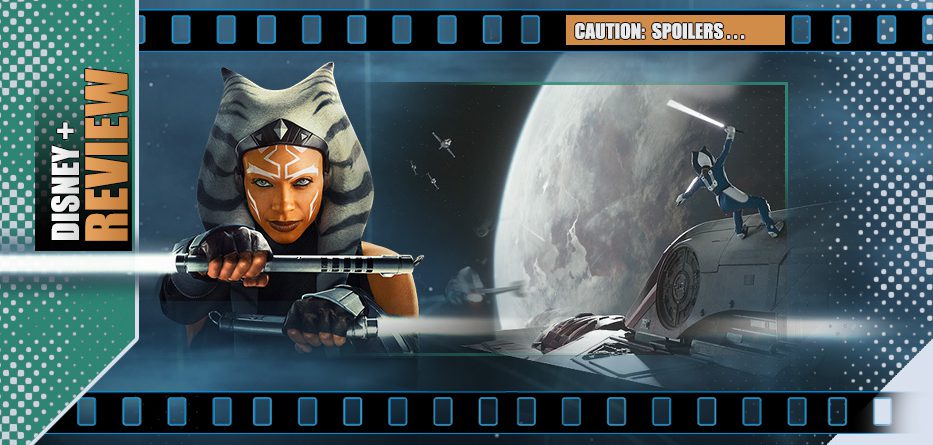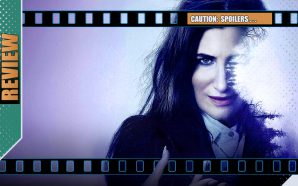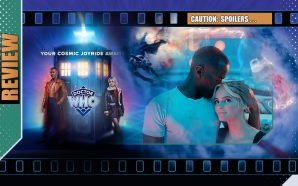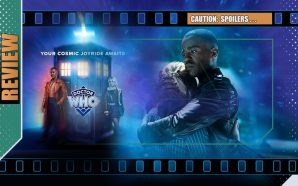As they track the fleeing Imperial ship, Ahsoka, Sabine and Huyang find time to continue Sabine’s training, though Huyang, who has evaluated potential Jedi with his robotic indifference for years, finds little time for compliments. Meanwhile, in her efforts to get them some back-up for the inevitable confrontation, Hera runs into red tape from New Republic politicians who think resources would be better spent elsewhere.
However, that may be a moot point when Ahsoka’s shuttle is discovered and a relentless attack on their position begins…
*spoilers*
As much down to a score that echoes classic Star Wars chords and tempos as the on-screen graphics and VFX, Ahsoka continues to feel inherently anchored in a familiar if extended galaxy far, far away, so it’s likely playing well to die-hard Star Wars fans as it threads the needle between the various, differing efforts of recent stable-mates. Yet it also runs the risk of the problem currently shrouding both the Star Wars and Marvel series – the feeling that more time is being spent with clever look-at-me connective tissue and callbacks than advancement of plot. Shorter seasons can mean tighter pacing, but they can also mean that sudden slower sequences, even when rich in character-development, can feel uneven and like filler. This all felt more like a diverting interlude than a wholesale chapter.
The idea of Ahsoka restarting Sabine’s Jedi-training takes the form of what plays out to be as an extended version of the famous Luke/Obi-Wan scene aboard the Millennium Falcon in Star Wars (in which Luke tries his hand at wielding a lightsaber for the first time and gets repeatedly zapped by a floating lazer-globe). Here it’s Ahsoka herself offering the test, slinking around her blindfolded padawan and assessing her moves. It’s decently if sedately choreographed – basically a fencing/kendo practice complete with wooden bokken – but with specific dialogue deliberately skewed to precisely recall that Skywalker moment, it rather indulgently fills a considerable amount of time in an episode where the story-telling barely runs to 30 minutes after credit-sequences. Also included in Time to Fly are Hera’s attempts to drum up support which come to naught given the New Republic’s play-safe attitude to resources – though we do get an appearance from Andor‘s Genevieve O’Reilly as Mon Mothma.
One doesn’t really expect wholesale scientific accuracy in a cosmic saga involving lightsabers, telekinetic samurai and walking, talking calamari, but there are certain things in this episode that – however visually pleasing they may be – still make the audience think ‘Really?‘ I’m sure that on paper or in a poster-image, Ahsoka standing on the wing of a spacecraft and deflecting enemy fire with her weapon of choice sounds utterly magnificent, but even in the moment it makes not an ounce of sense (spaceships shooting at each other don’t generally need to target people (and miss), they just need to simply blow up the ship they’re standing on) and is all executed with blatantly inconsistent ideas of gravity (magnetic boots really shouldn’t allow that sort of dexterity of ability to dance and somersault). And in an otherwise fun dogfight between ships, the frequent appearance of apparent smoke in deep space also feels immediately ‘off’ even if you can come up with an in-universe explanation.
Outside the ship and beyond the Ahsoka antics, the main attractions of Time to Fly are the beautifully-rendered Purrgil, the ‘space-whales’ that existing fans will remember from a brief hyperspace appearance in The Mandalorian and, more importantly, the end of the animated Rebels series in which they carried off the evil Thrawn and the young Jedi Ezra Bridger. It’s great – and inherently Star Wars – to see the dogfighting craft weave around each other and now seen between almost Lovecraftian tentacles, but excellent visuals have never been a problem for any of the Lucasfilm offerings, only context.
All in all, this is as glossy as ever, with imagery that other shows would die for and lots of talent involved…. but while there’s continuous world-building, there’s also little sense of pacing and urgency needed…
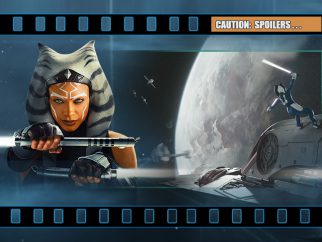
- Story7
- Acting8
- Direction8
- Production Design / VFX9

